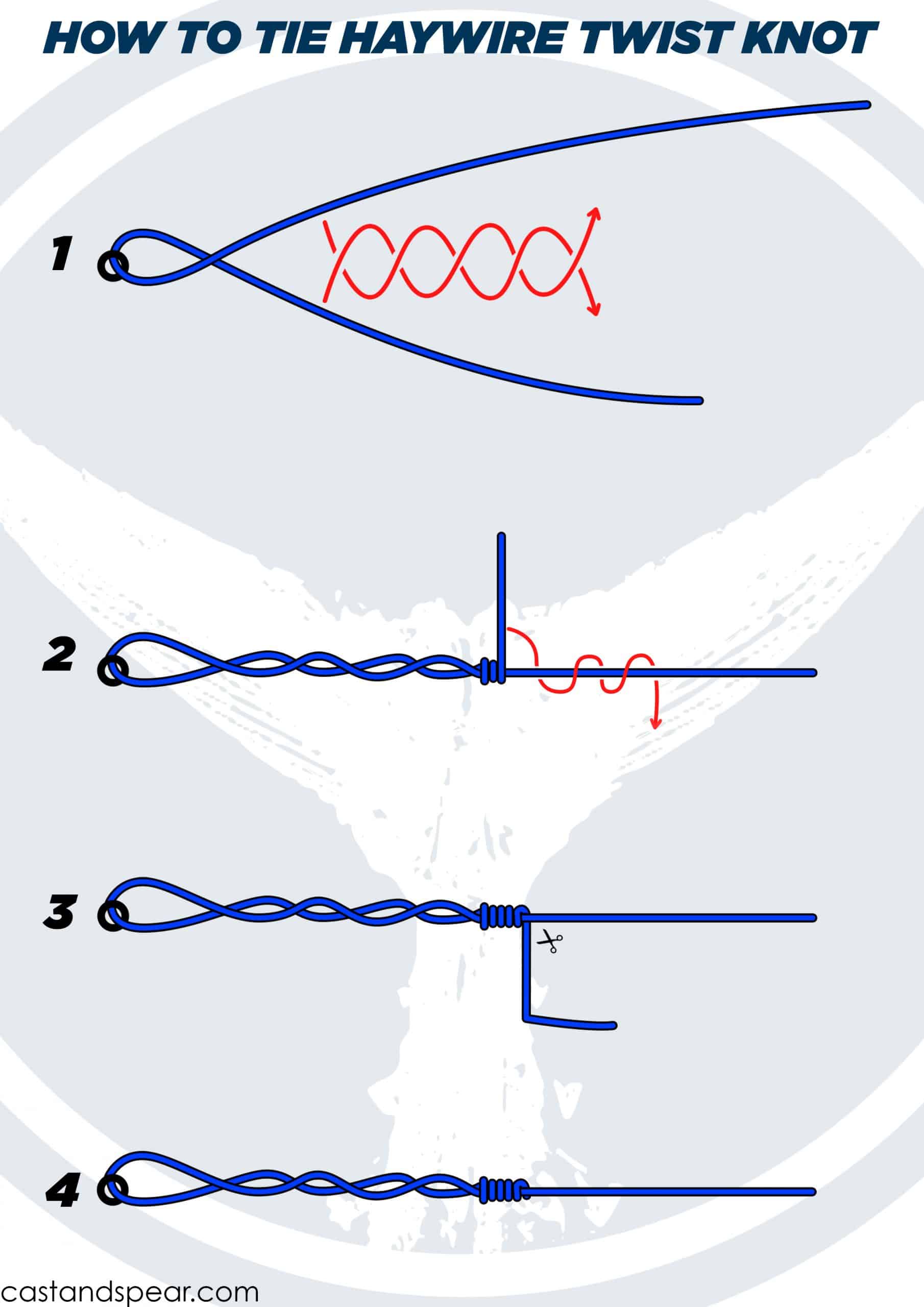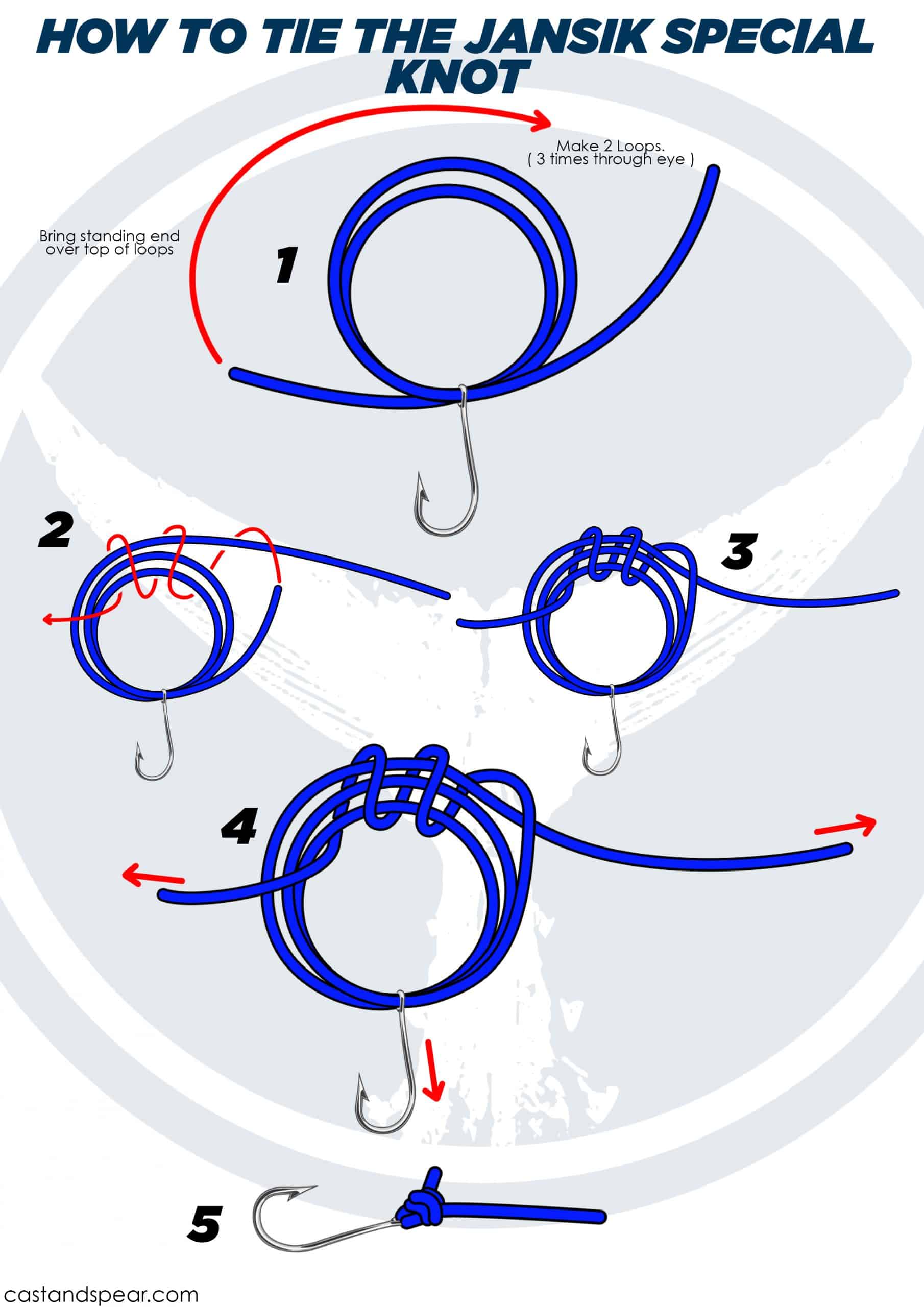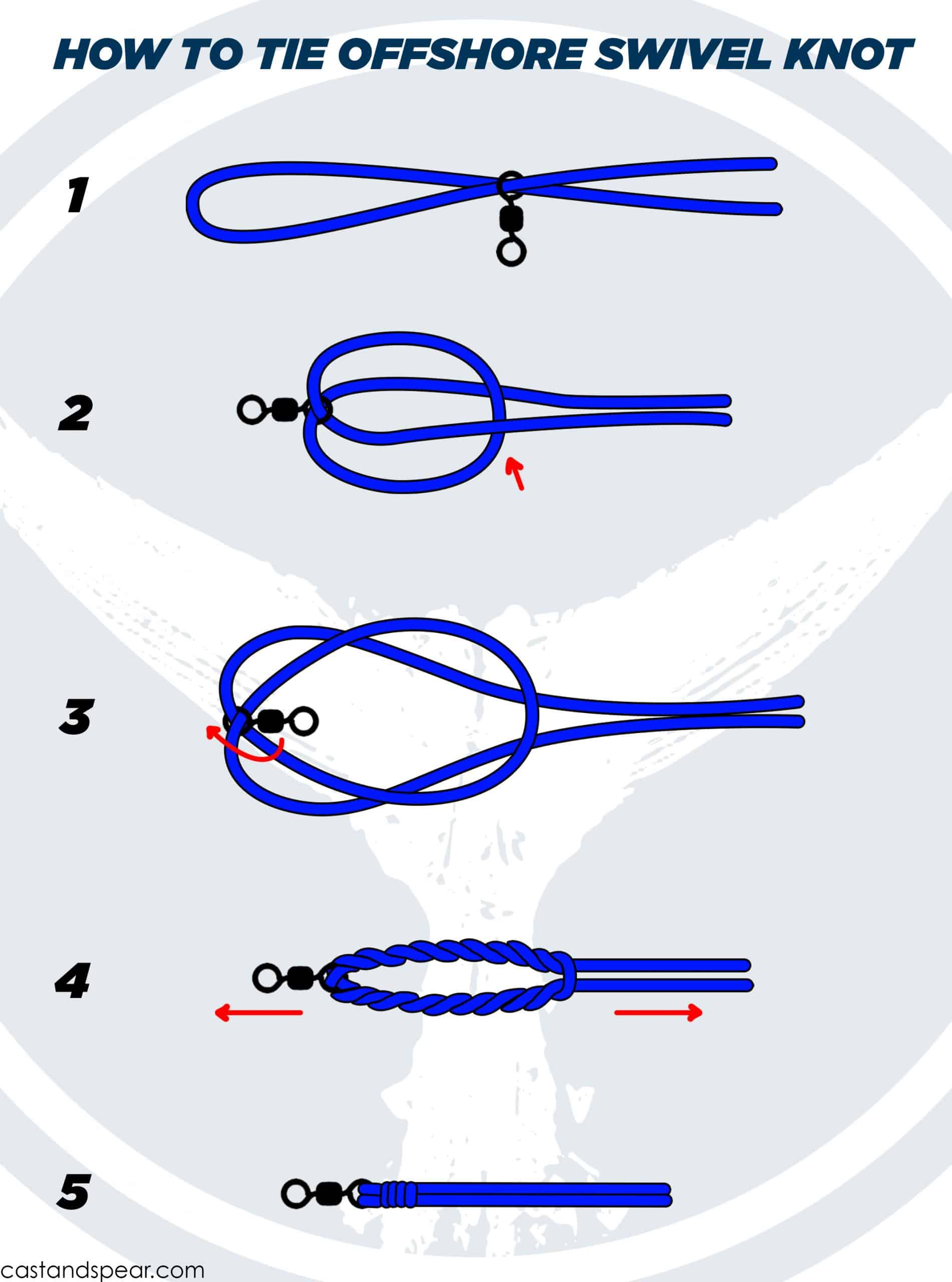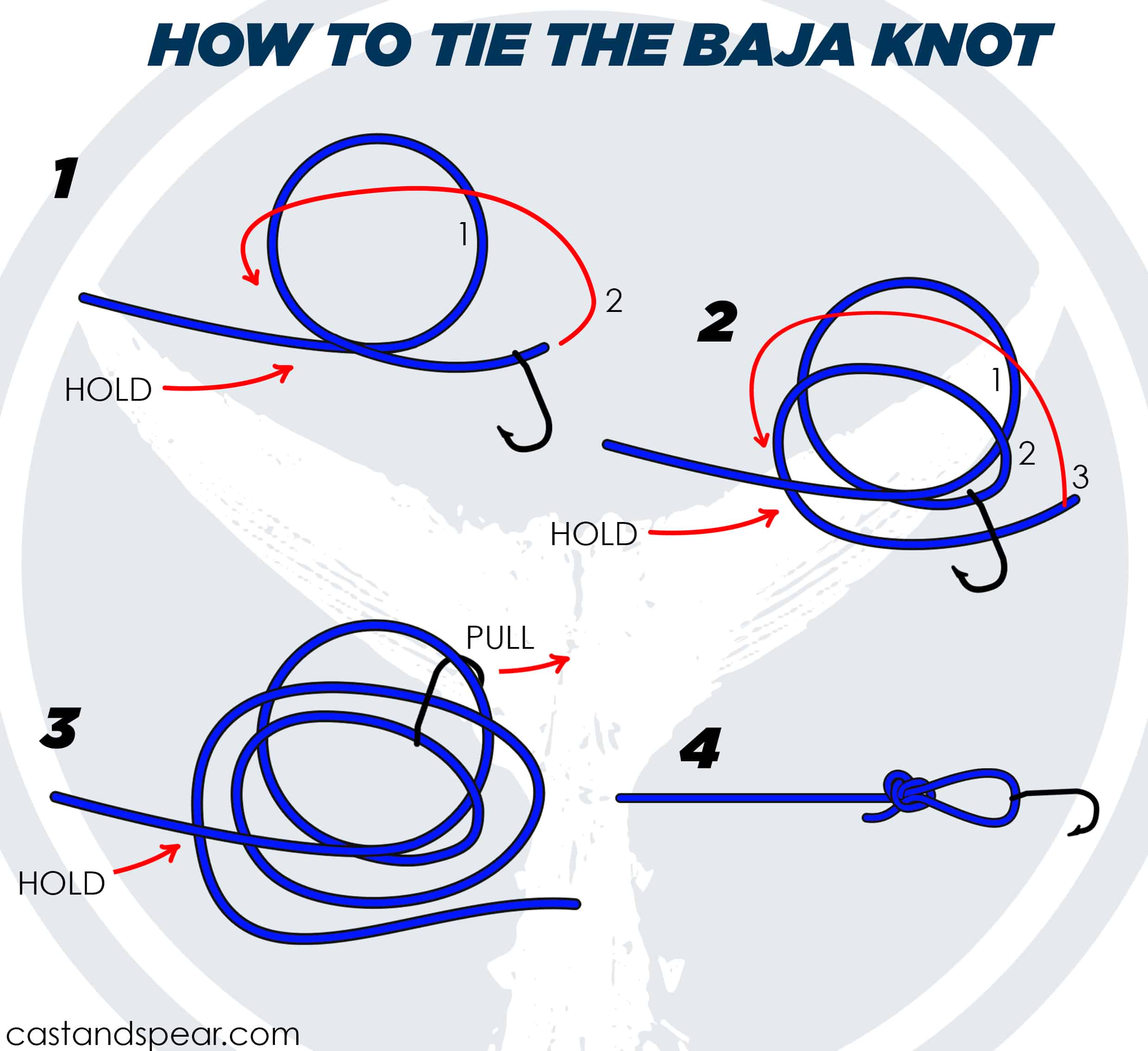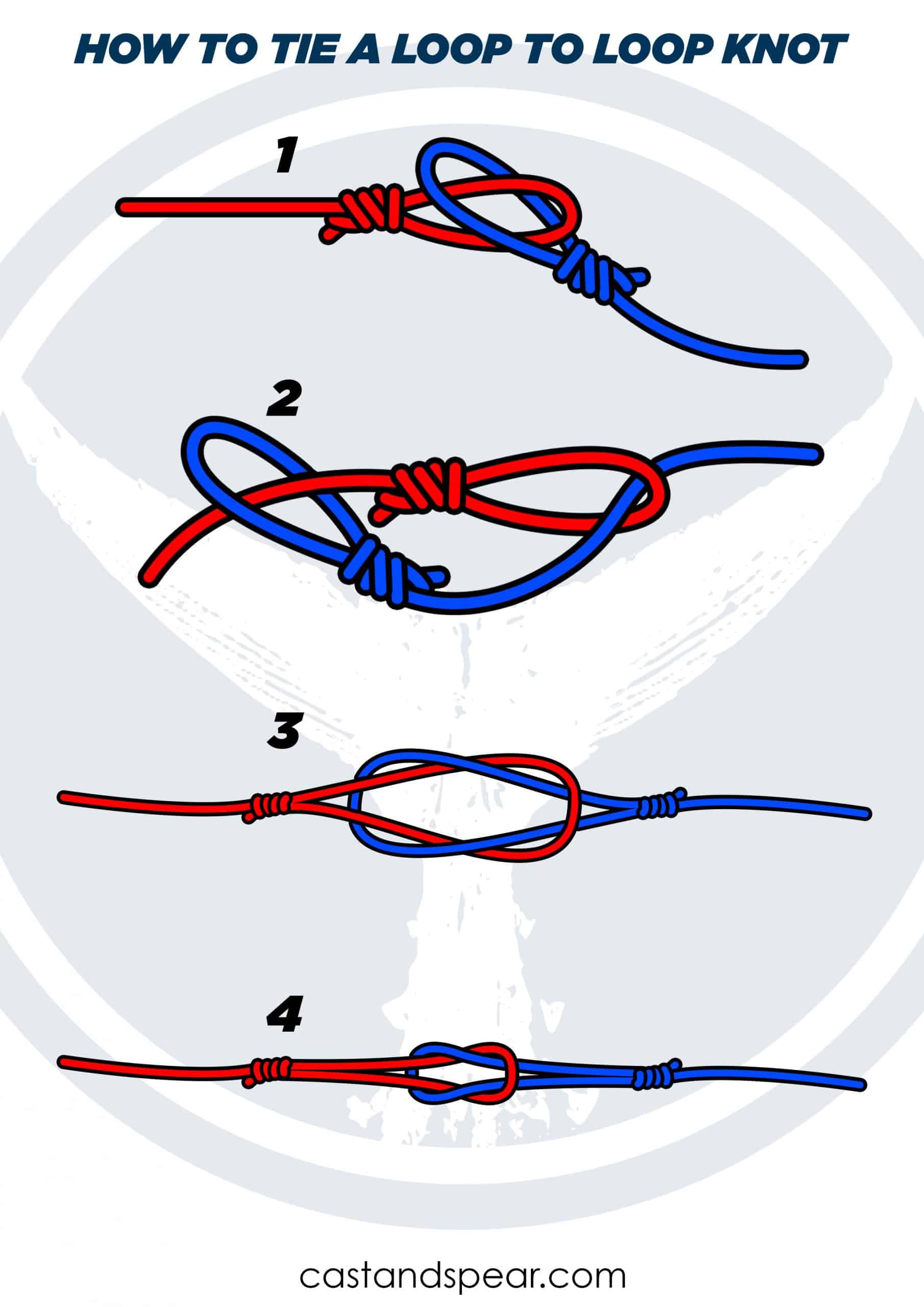Have you ever wondered how to tie the Eye Crosser Knot? Understanding this knot is crucial for any angler, as it’s known for its strength and versatility in various fishing scenarios. In this article, we’ll delve into the intricacies of the Eye Crosser Knot, providing a step-by-step guide on how to tie it and discussing its advantages and disadvantages compared to other popular fishing knots.
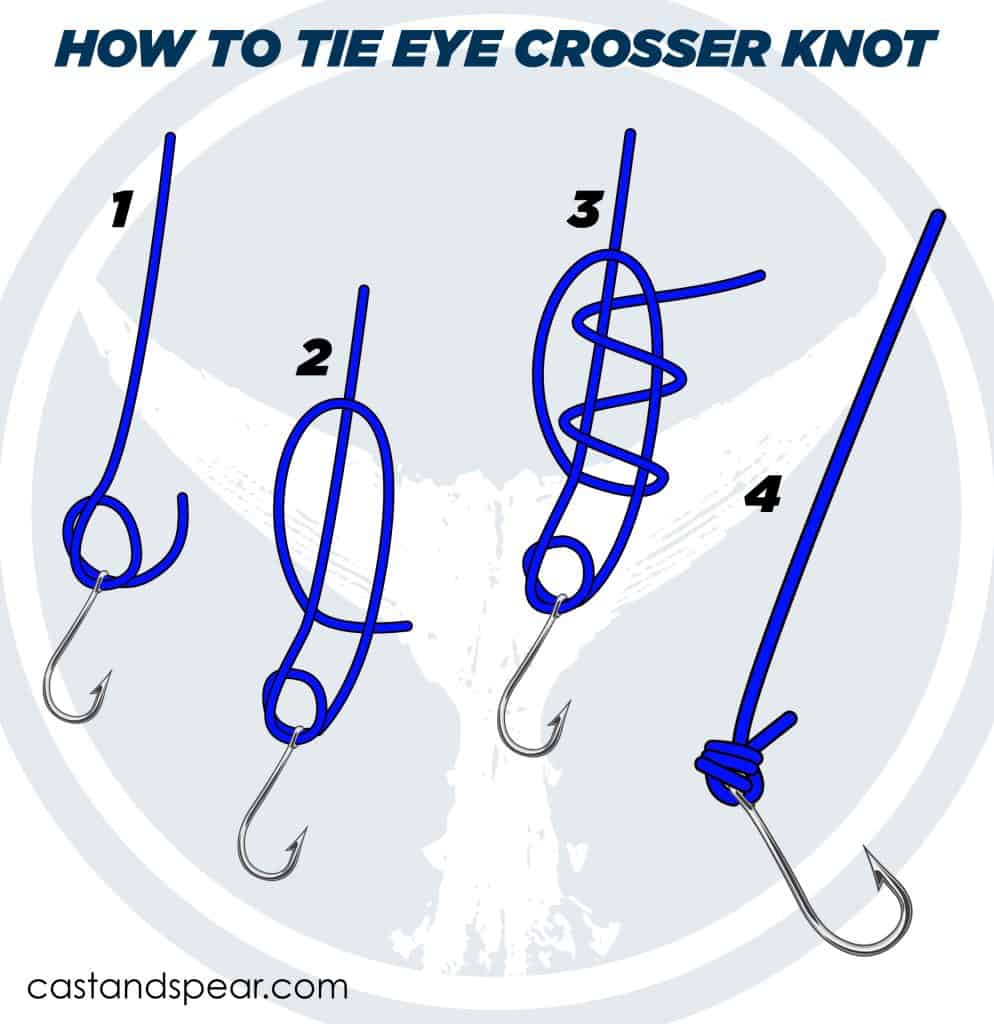
The Eye Crosser Knot is a compact powerhouse among fishing knots. It’s simplicity personified, with a unique design that makes most anglers love it.
But why should you learn about this knot? Imagine you’re fishing, and your catch is struggling at the end of the line. You are worried your line might abandon you midway. If you used the Eye Crosser Knot, you can breathe a sigh of relief. This knot is strong and reliable enough.
If you want to not worry about your line every time you’re fishing, make sure you master the Eye Crosser Knot. Here’s how to tie it.
Here’s How to Tie the Eye Crosser Knot Step by Step
- Start by fishing the line through the hook or ring twice.
- Give yourself enough tag end and form a loop.
- Wrap the tag end around the two parallel strands of the line three times. If you were tying a Fish N Fool, you’d go five to six wraps on this step.
- Pull the tag end to cinch down the knot lightly.
- Add moisture with saliva or water.
- Pull the tag end to cinch down the knot on the standing line fully.
- Pull the standing line to finish the knot to rest on top of the hook ring.

The Eye Crosser Knot At a Glance
When it comes to tying a hook to the end of a line, the eye-crosser knot is one of the strongest and best knots you can use.
It started to gain popularity when it was featured on the North American Fisherman television show during the “Knot Wars” series. Here, the eye-crosser knot was tested against other strong knots. To everyone’s surprise, it beat all the other heavy-duty terminal tackle knots and was a tie with the Palomar Knot.
The reason why this knot is called eye-crosser is how it appears quite a bit perplexing when it’s being tied together. However, once you get to try tying this knot, you’ll find out that it’s not as puzzling as it’s called out to be.
When to Use the Eye Crosser Knot
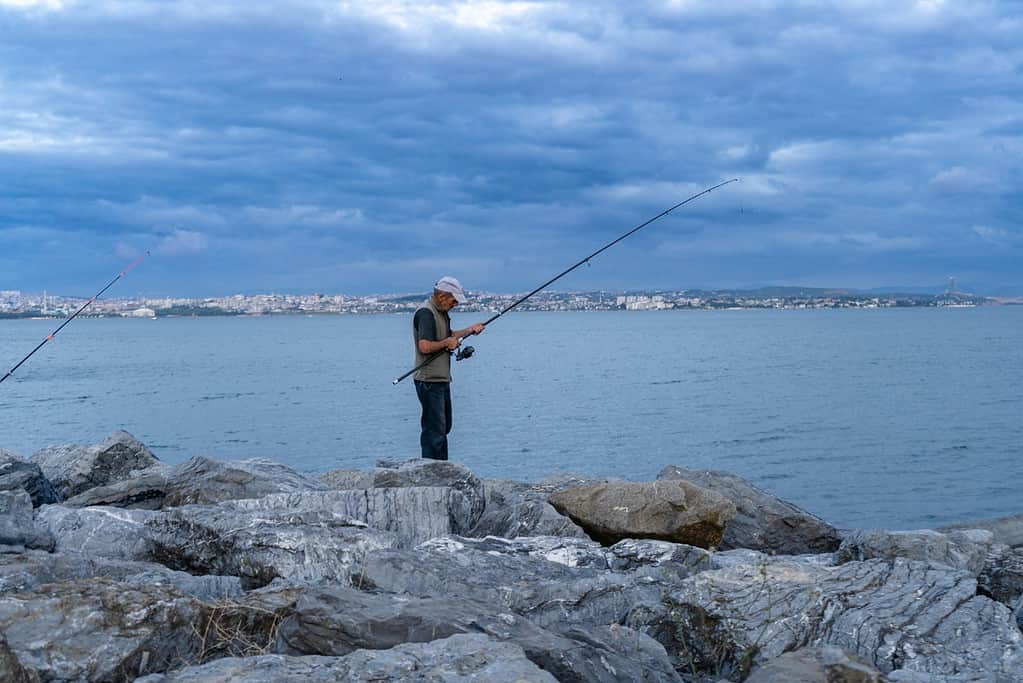
Here are some places where the eye-crosser knot shines:
- Fly Fishing: You can use this knot for fly fishing. It works like a charm! The Eye Crosser Knot holds strong, even when that big catch is fighting on the other end.
- Saltwater Fishing: It’s no secret that the ocean can be a tough place. But with the Eye Crosser Knot, you’ve got a strong ally that won’t back down, even in the face of saltwater’s corrosive touch.
- Fishing with a Lure: When you’re trying to trick a fish with a shiny lure, you need a knot that won’t give up the game. The Eye-Crosser Knot is small, compact, and stays hidden, letting your lure take center stage.
Eye Crosser vs Palomar Knot: What’s the Difference?
North American Fishing put this one up against the Palomar, and the Eye Crosser Knots competed well against it. You can use this knot with a braid in place of the Palomar or San Diego Jam knot if you need something tied quickly.
The Eye Crosser Knot and the Palomar Knot are both popular among anglers, but they have some key differences:
Tying Method
First things first, the Palomar and Eye Crosser knot have different tying methods. Here’s how to tie the Palomar knot.
Strength
Comparing the two knots, the Palomar knot is still much stronger than the Eye Crosser Knot. Despite this, the Eye Crosser knot still offers a secure connection and is particularly effective when tied correctly.
Versatility
The Eye Crosser Knot is more versatile than the Palomar Knot. It can be used with all types of fishing lines. In comparison, the Palomar Knot can be more challenging to tie with thicker lines or larger hooks because of the need in doubling the line.
Ease of Tying
The Eye Crosser Knot is much easier to tie especially when using thicker lines or larger hooks. The Palomar knots is not complicated but it has more steps and can be trickier to tie.
Applications
Palomar Knot is a popular choice to be used with braided lines because of its secure hold and high strength. On the other hand, the Eye Crosser Knot is preferred if you need to tie something quickly.
All in all, whether you use the Palomar Knot or the Eye Crosser Knot is up to your fishing situation, personal preference and the line you’ll be using. Both knots have their own pros and cons so make sure to take these into consideration when choosing which knot to use.
Advantages of the Eye Crosser Knot
If you’re using a braid, then we think the Eye Crosser Knot can be strengthened a bit more by adding a few more twists before cinching down.
Strength and Reliability
The Eye Crosser knot is so sturdy that it maintains up to 90-95% of the line’s strength. It has a power-packed performance. You can rely on it to not give up midway no matter how feisty your catch may be!
Simplicity of Tying
The Eye Crosser Knot is an excellent choice if you need a secure connection tied quickly. It’s as easy to tie as a shoelace, making it a great option for beginners. You can spend less time fussing over knots and more time enjoying your fishing trip.
Versatility in Different Fishing Situations
Going fly fishing or saltwater fishing? Whatever your fishing trip, you can use the Eye-Crosser knot. It has the strength, compact size, and easy-to-tie nature to make it perfect for any situation. If there’s a knot you shouldn’t forget, make it this one.
Alternatives to the Eye Crosser Knot
Fish N Fool Knot
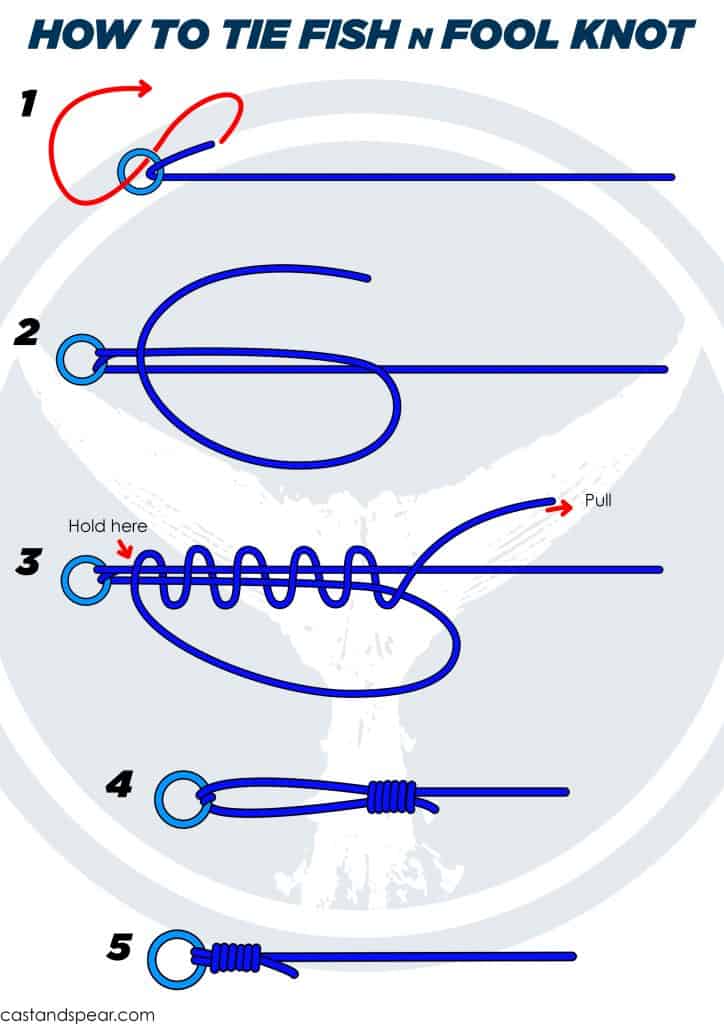
The Fish ‘N Fool Knot is a Uni that has a double wrap through the eye of your tackle. It is a secure knot that is easy to tie and should be one that is kept in your arsenal when you need a bit more strength than a standard Uni.
Palomar Knot
The Palomar Knot is one of the fishing knots that gets a lot of attention from anglers across the globe. This knot is incredibly strong, and holds up to abuse. It works great for mono and fluorocarbon. However, depending on the type of braided fishing line you’re using, you might want to increase the number of overhand knots to prevent slippage. With a bit of practice, you’ll have this knot seating perfectly above the hook eye and ready for the biggest fish.
Improved Clinch Knot
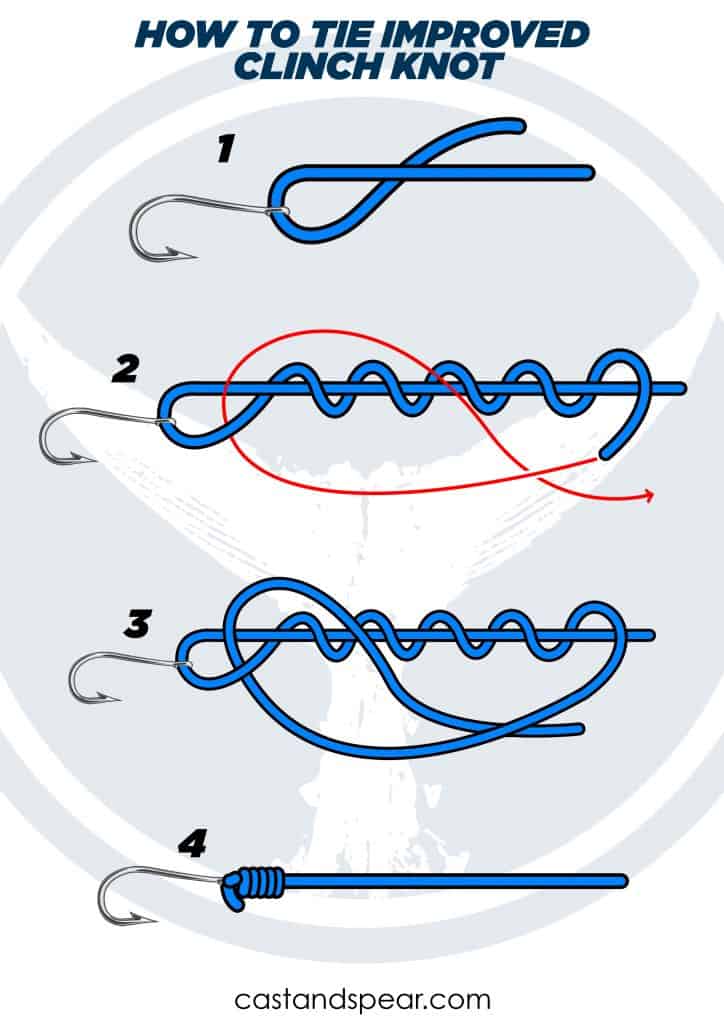
The Improved Clinch Knot is used by anglers to tie the terminal tackle to a monofilament line. It can also tie a line to a swivel, clip, or an artificial fly. This knot has become popular enough that most people use it rather than the original Clinch Knot. That’s because the improved version is easy to tie and offers more strength than the original clinch style.
Care and Maintenance of Knots
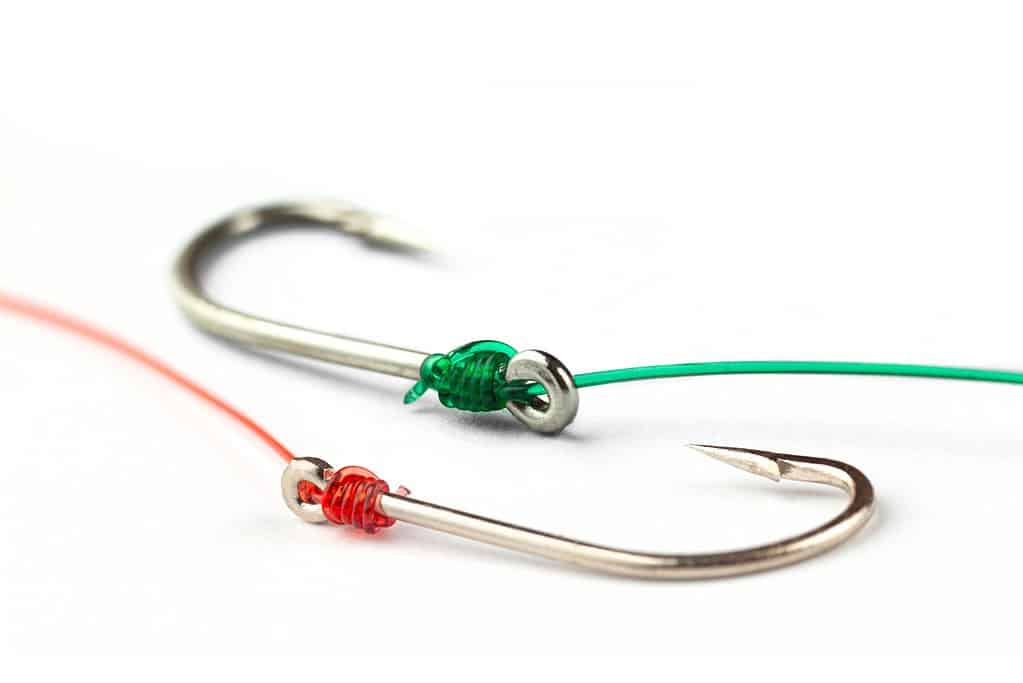
Knot Maintenance 101
Every knot, including the Eye-Crosser, thrives with a little care. Here are a few tips to ensure its longevity:
- Lubricate Before Tightening: Before you tighten your knot, wet it a little. This reduces friction, prevents damage to the line, and helps the knot tighten smoothly.
- Inspect After Use: Always check your knots after a fishing trip, especially if you’ve landed a big catch. The tension can sometimes weaken the knot.
- Practice Proper Storage: How you store your gear matters. Keep lines and knots away from sunlight, heat, and chemicals to maintain their strength.
Risks and Signs of Knot Failure
Failure is not an option when you’re reeling in that dream catch! Here’s what to watch out for to prevent knot failure:
- Loosening Knots: If you notice your knot loosening, it’s a sign of trouble. Check and retighten or retie as needed.
- Frayed Lines: Frayed or damaged lines can weaken the knot. Inspect your line regularly, especially before you start your fishing trip.
- Unexpected Knot Slippage: If you find your knot sliding when it shouldn’t, it’s a signal to retie your knot.
Remember, an ounce of prevention is worth a pound of cure! Regular care and maintenance of your knots can keep your fishing adventures smooth and successful.
Frequently Asked Questions
The Eye-Crosser Knot is a mighty little knot! When tied correctly, it maintains up to 90-95% of the line’s original strength. It’s like the superhero of knots – small in size, but mighty in power!
Both are reliable options for fluorocarbon.
Not at all! One of the reasons the Eye-Crosser Knot is so popular is because of its simplicity. Even if you’re new to the world of fishing, you can master this knot in no time. It’s like tying your shoelaces – once you get the hang of it, you’ll do it without a second thought.
The fish n fool has five to six wraps instead of three.
You sure can! Whether you’re fly fishing in a serene stream or battling the big ones in the saltwater, the Eye-Crosser Knot has your back. It’s like a trustworthy friend who’s always ready for an adventure!
Nope, it’s quite the opposite! The Eye-Crosser Knot is known for its firm grip. Once tied correctly, it stays put, even when faced with a tough fight from a feisty fish.
The Eye-Crosser Knot is often compared to the Trilene Knot because of its strength and simplicity. But it has a unique advantage – it’s even simpler to tie! It’s like the golden key that fits many locks – versatile, reliable, and easy to use.
Final Thoughts
The Eye-Crosser Knot can be your secret weapon for any fishing adventure. It’s easy to tie, incredibly strong, and reliable in all sorts of conditions. Whether you’re a seasoned fisher or a newbie just starting out, this knot is as essential as your fishing rod. And just like with any other knot, practice makes perfect.
Don’t forget to share this article with your fellow anglers so they can also tie the perfect Eye-Crosser Knot. And while you’re at it, dive into the sea of other articles we have on Cast and Spear.

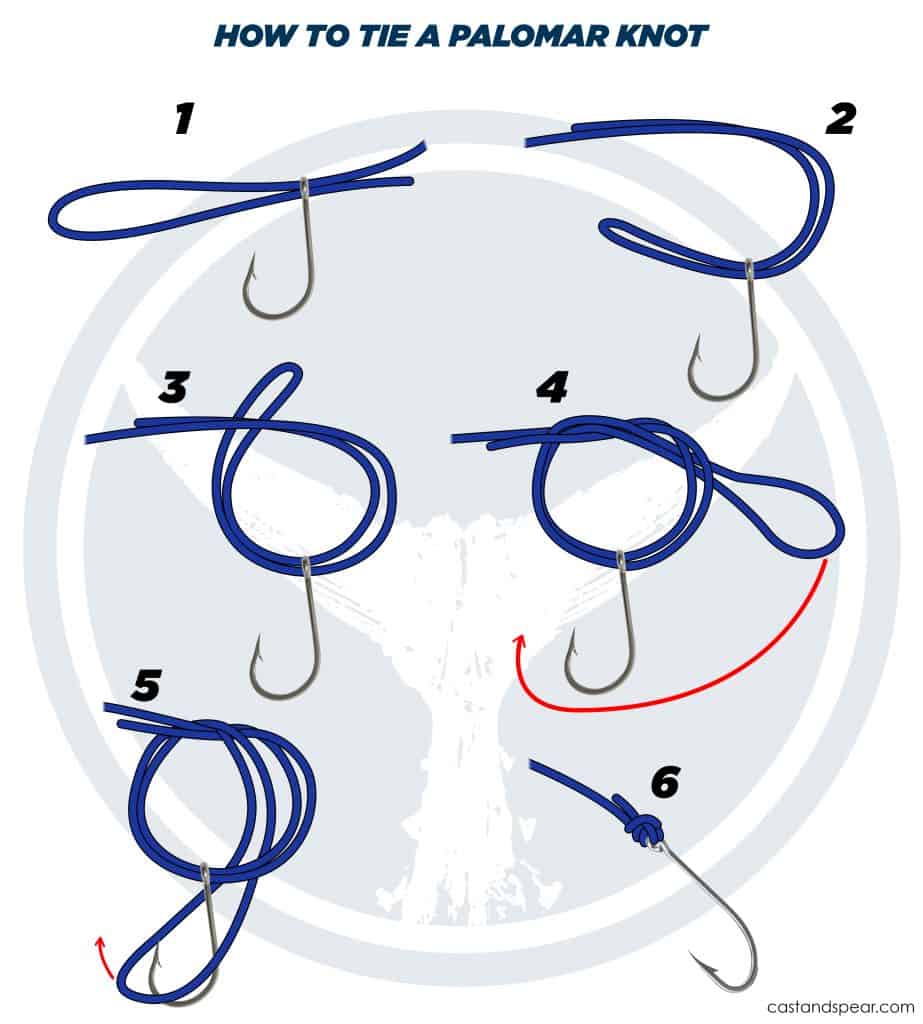



 Facebook
Facebook YouTube
YouTube